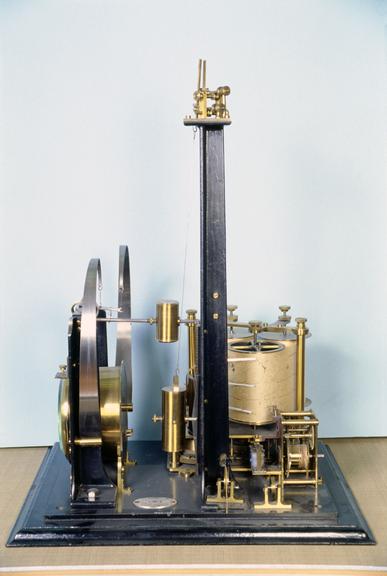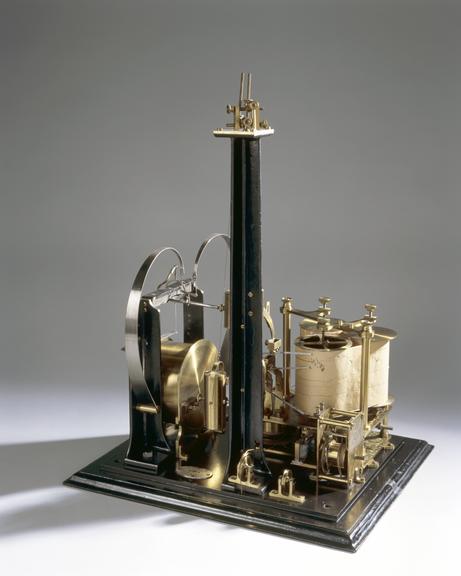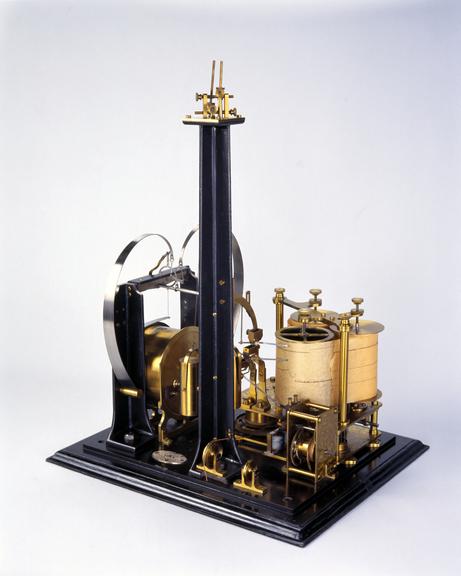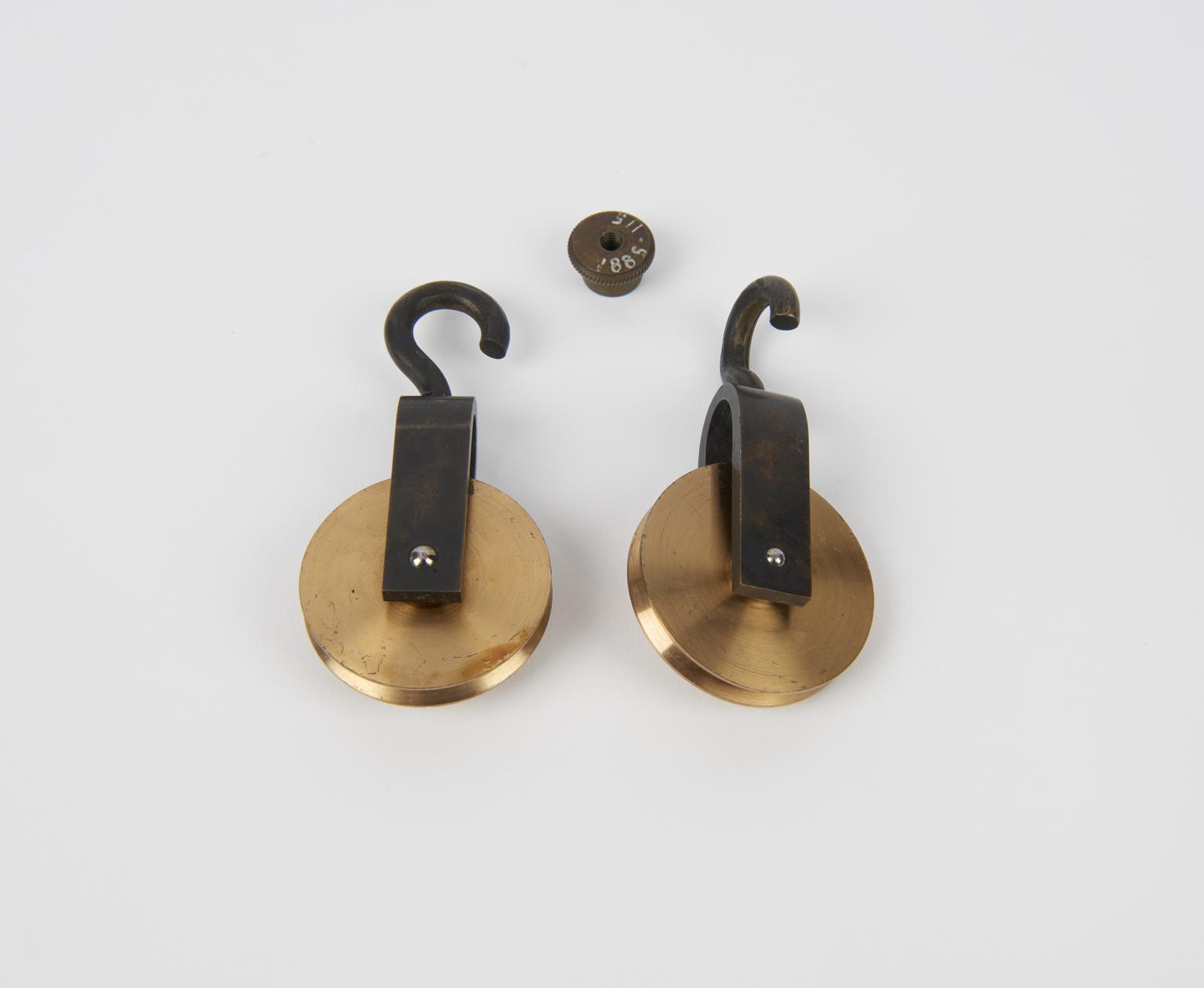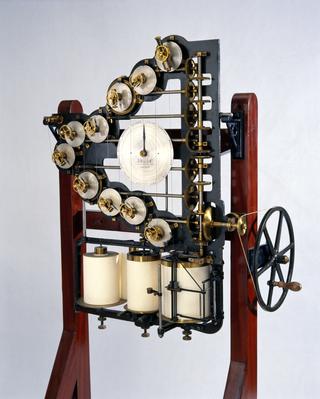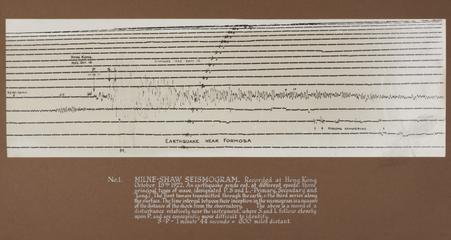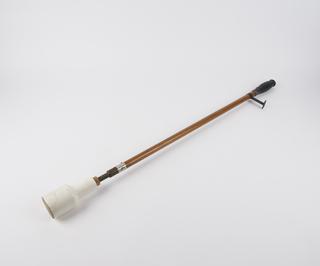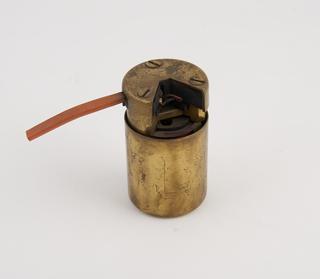Three weights for Gray-Milne seismograph
Three weights for Gray-Milne seismograph for recording both horizontal and vertical motion during an earthquake, designed in Japan by Thomas Gray and John Milne, and made by the James White firm, Glasgow, Scotland, 1885.
More
The Scottish engineer Thomas Lomar Gray and British geologist John Milne met whilst working as professors at the Imperial College of Technology in Tokyo, Japan. They designed this instrument to record the motion of the earthquakes they frequently experienced there. Several examples of their design were constructed in Japan, but this example was manufactured by the James White instrument firm after Gray returned to Britain in 1883.
Two conical pendulums register both horizontal components of motion, and the large flat curving springs are part of the lever mechanism that registers vertical motion. The instrument ran continuously, driven by clockwork, with a timekeeping device making a mark on the paper ribbon every ten minutes so that the timing of any disturbance could be recorded.




